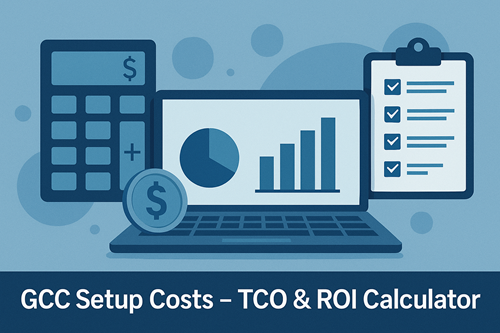Now Reading: Why 2024 Was a Turning Point for GCCs
-
01
Why 2024 Was a Turning Point for GCCs

The GCC Landscape Before 2024
Global Capability Centers (GCCs) in India were primarily seen as cost-efficient offshore units. By 2023, their role started evolving, but it was in 2024 that they truly stepped into a new identity, becoming strategic contributors to innovation, digital transformation, and global scalability.
Before 2024, Global Capability Centers (GCCs) in India were predominantly viewed as offshore units focused on cost-efficiency, handling functions like IT support, back-office operations, and shared services. While many had started adopting automation and digital tools, their strategic value remained under-leveraged. India, despite being home to over 1,500 GCCs by 2023, was still seen as a back-end service hub for global enterprises.
But that perception was changing fast, fueled by emerging technologies, an evolving talent ecosystem, and India’s growing policy push. The stage was set for a breakout year, and 2024 delivered.
What will you learn – The GCC Landscape Before 2024, Key Milestones That Redefined GCCs in 2024, The Strategic Shift: Cost-Cutting to Capability-Building, Tech Takes Over: AI, Cloud & Cybersecurity, The Talent Transition: Tier-2 Cities & Hybrid Models, Policy Support & Government Incentives, Challenges That Made 2024 a Turning Point, Looking Ahead: What 2024 Means for GCCs in 2025
Key Milestones That Redefined GCCs in 2024
2024 proved to be a watershed moment for the GCC landscape in India:
India hosted over 1,800 active GCCs, contributing $64.6 billion in annual revenue—a 40% increase YoY.
On average, 1 new GCC was launched every week, highlighting India’s magnetic appeal to global enterprises.
364,000 new jobs were created in the GCC space, with hiring spread across IT, R&D, analytics, and design.
Sectors like retail, BFSI, healthcare, and pharma showed significant GCC activity, moving beyond traditional tech and IT services.
India now accounts for nearly 50% of all GCCs globally.
This expansion marked a fundamental shift from volume-based growth to capability-led scale.

The Strategic Shift: Cost-Cutting to Capability-Building
Previously considered extensions for outsourcing repetitive tasks, GCCs in 2024 matured into strategic hubs that drive enterprise-wide transformation.
Key shifts included:
Core ownership of digital innovation, product engineering, and business analytics.
GCCs began to drive IP creation, particularly in verticals like AI, life sciences, and connected tech.
Global enterprises adopted Build-Operate-Transfer (BOT) models to scale innovation faster in India.
Companies like Microsoft, Ford, and Broadridge transitioned their India centers into essential nodes of global R&D and product strategy.
This transition was not just functional—it was philosophical. GCCs became co-creators of value, not just executors of global directives.
Tech Takes Over: AI, Cloud & Cybersecurity
2024 was also the year technology became the backbone of GCC evolution.
According to the Inductus report:
78% of new GCCs prioritized AI, ML, and data analytics capabilities.
Over 90% increased spending on cybersecurity, implementing zero-trust architectures, data privacy protocols, and real-time threat monitoring.
Cloud-first strategies were adopted across functions—particularly hybrid and multi-cloud models to support agile delivery and data scalability.
Generative AI started gaining traction in customer service, content automation, and risk assessment within GCCs.
India’s positioning as a digital transformation enabler became clearer than ever.
The Talent Transition: Tier-2 Cities & Hybrid Models

With Tier-1 cities like Bengaluru and Hyderabad reaching saturation, 2024 saw a major pivot to Tier-2 cities such as Jaipur, Coimbatore, Hubli, and Chandigarh. Reasons included:
Lower operational costs
Incentives from state governments
Emerging digital infrastructure
Availability of untapped talent
However, challenges persisted in specialized talent availability, prompting:
GCCs to offer salaries 30–40% higher than average for niche roles (e.g., cybersecurity).
Partnerships with universities for campus hiring and curriculum alignment.
Broader adoption of hybrid work models, with 79% of GCCs implementing flexible arrangements—improving both productivity and inclusion.
This transition also enabled GCCs to build decentralized, resilient workforce models that extended reach and agility.
Policy Support & Government Incentives
2024 saw unprecedented state and central government support for GCC investments:
The Uttar Pradesh GCC Policy 2024 became a blueprint—offering single-window clearances, tax breaks, and subsidized infrastructure in cities like Lucknow and Kanpur.
Karnataka, Telangana, and Maharashtra further enhanced their GCC investment policies.
Central government programs such as Digital India and Skill India continued bridging digital gaps and workforce readiness.
This created an environment where ease of doing business improved substantially for foreign companies looking to establish or scale operations in India.
Challenges That Made 2024 a Turning Point
The transformation wasn’t without friction. Several bottlenecks forced GCCs to rethink their strategies:
Talent shortages in AI, ML, and cybersecurity roles increased recruitment and retention costs.
Infrastructure in Tier-2 cities—especially digital readiness and commercial real estate—was still catching up.
High attrition rates in mid- and senior-level IT roles created continuity issues.
Geopolitical instability and economic uncertainty required GCCs to build risk resilience and geographic diversification.
Rather than slowing down, these hurdles triggered strategic maturity, compelling enterprises to invest in upskilling, automation, and better governance.
Looking Ahead: What 2024 Means for GCCs in 2025
The ripple effect of 2024 will be seen across the coming years. Key projections include:
India’s GCC market value is expected to hit $100 billion by 2030.
AI and automation will power over 75% of GCC operations by then.
85% of GCCs are forecasted to fully transition to hybrid or cloud-native models.
Sustainability, ESG alignment, and IP protection will become part of core GCC KPIs.
Collaboration with academia will grow deeper to bridge the demand-supply gap in emerging technologies.
More than ever, GCCs will drive business transformation at the intersection of cost, capability, and culture.
2024 wasn’t just another year—it was a redefinition of what Global Capability Centers could be. From expanding into new cities and verticals to becoming innovation engines, Indian GCCs stood at the heart of enterprise evolution.
With a clear trajectory towards AI integration, decentralization, and global innovation ownership, GCCs are no longer back-end support systems. They are front-line strategic enablers, and India is leading the charge.

![]() This analysis and curation is part of ScaleGCC Research, a leading source for GCC insights.
This analysis and curation is part of ScaleGCC Research, a leading source for GCC insights.
Disclaimer:
This blog is based on insights and data published in the public domain. All facts, statistics, and projections referenced herein are attributed to the original report unless otherwise noted.
Related Posts
Stay Informed With the Latest & Most Important News
Previous Post
Next Post
Previous Post
Tools3 months ago
GCC Setup Costs - TCO & ROI Calculator
Next Post
Tools3 months ago
Sample GCC Executive Dashboard
Interesting Read
Tools3 months ago
GCC Location Feasibility Assessment Tool
Tools1 month ago
Tech Skills Readiness Analyzer
Tools3 months ago
GCC Setup Costs - TCO & ROI Calculator
Tools5 days ago
GCC Vendor Evaluation Framework














